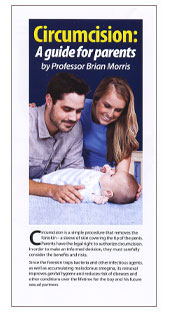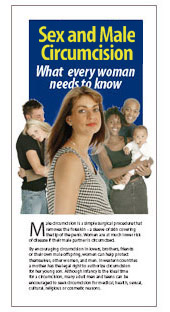Circumcision - Pain and Memory
No adverse psychological aftermath has been demonstrated [Schlosberger et al., 1992]. A longitudinal study in the UK, beginning in 1946, involving over 5,000 individuals followed from birth to age 27 found no difference in developmental and behavioural indices between circumcised and uncircumcised males [Calnan et al., 1978].
Long-term psychological, emotional, and sexual impediments from circumcision are anecdotal [Williams & Kapila, 1993; Moses et al., 1998] and can be discounted. It must be recognized that there are many painful experiences encountered by the child before, during and after birth [McIntosh, 1997]. Circumcision, if performed without anesthetic is one of these. Taddio et al. [2000, 2002, 2009] found that local anesthesia greatly diminished or eliminated pain.
Cortisol levels, heart rate and respiration have registered an increase during and shortly after the procedure [Taddio et al., 1997a; Taddio et al., 1997b], indicating that the baby is not unaware of having had something painful done in instances when circumcision has been carried out with no anesthetic. It is therefore generally advised that local anesthetic be used for all circumcisions on infants (more on anesthesia later). Taddio et al. [2000, 2002, 2009] found that local anesthesia greatly diminished or eliminated pain.
The response is variable and, even without anesthetic, some babies show no signs of distress at all. Most do, however, and this may be contributed by the restraining procedure, not just the surgery itself.
In the past doctors and parents had to weigh up the need to inflict this short-term pain in the context of a lifetime of gain from prevention or reduction of subsequent problems. Use of anesthetic for circumcision makes it either relatively or absolutely pain-free.



